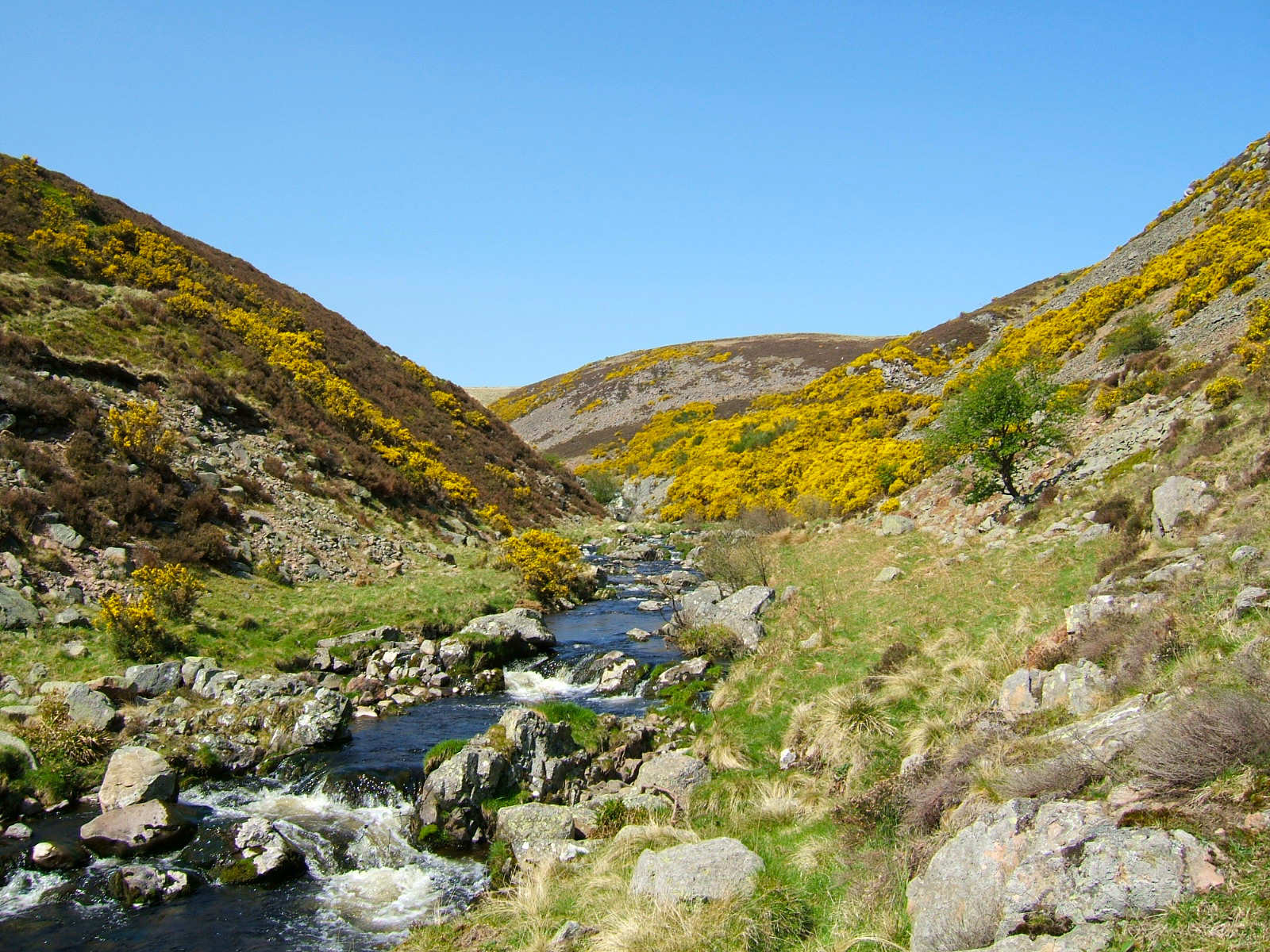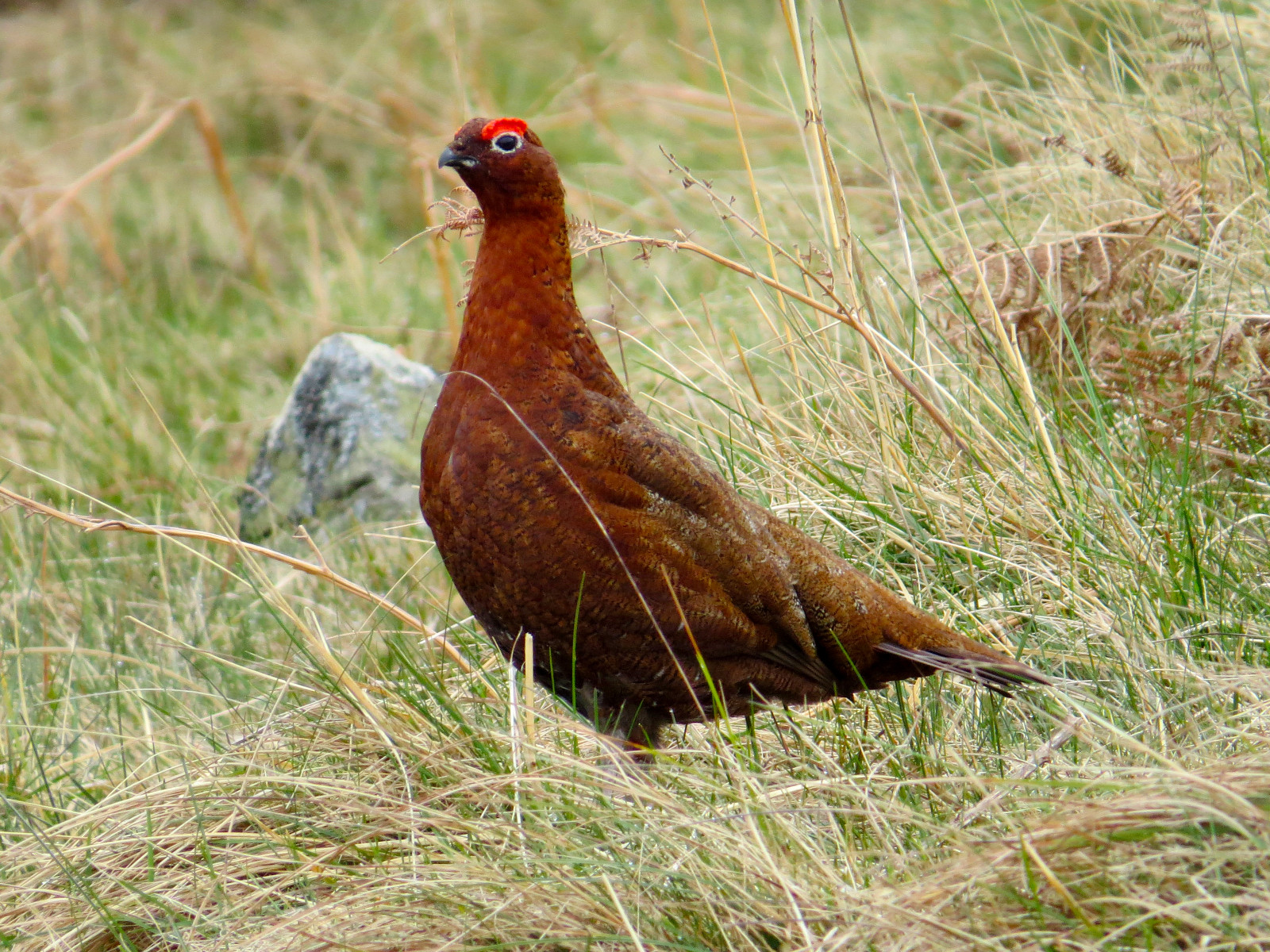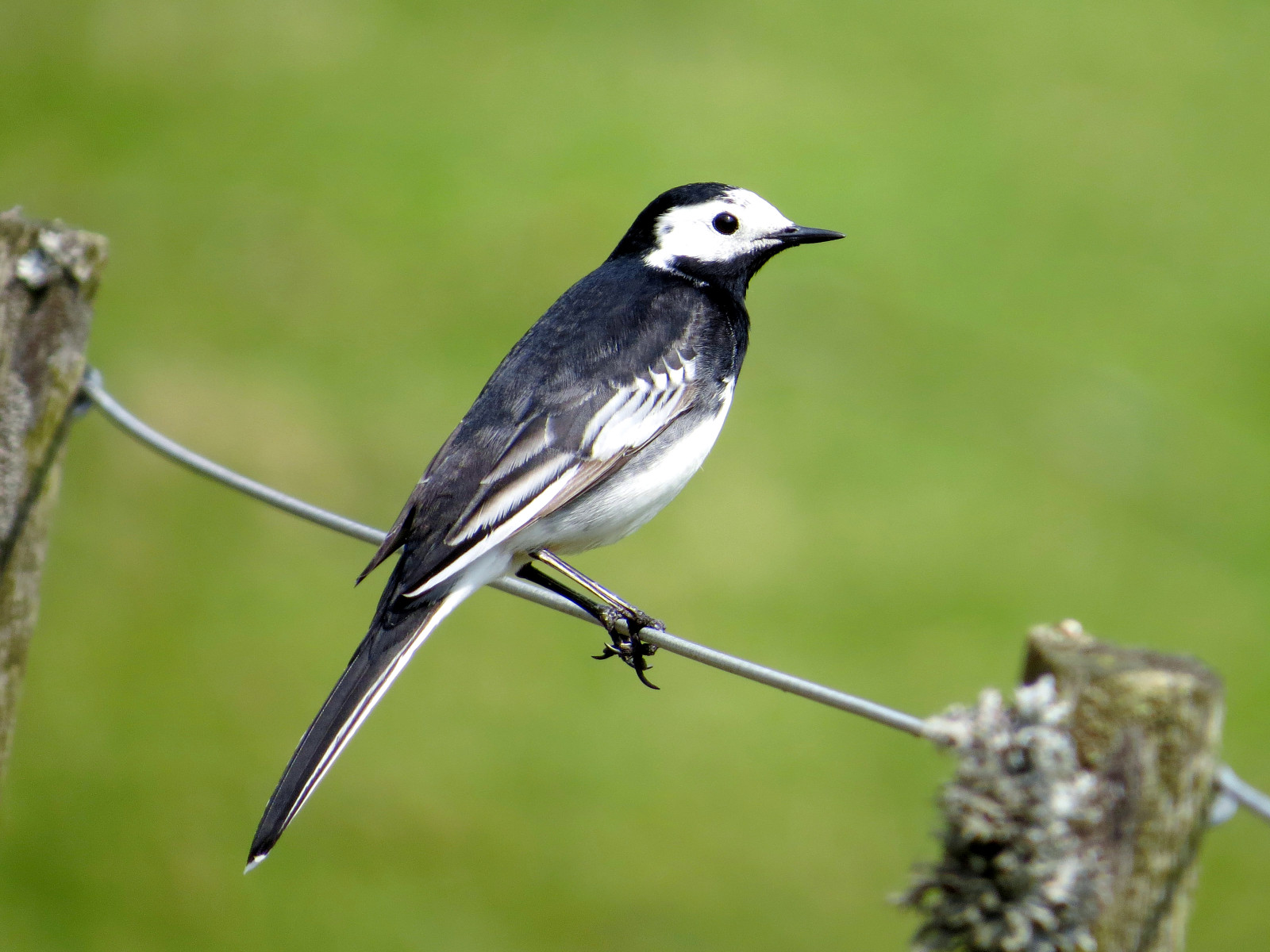Opis
The Harthope is one of Northumberland's best upland valleys, with a mix of semi-natural Alder-Oak-Birch-Hazel woodland, Hawthorn scrub, sheep-grazed grass, and higher up, heather moors and some rocky crags and scree. The highest ground, on The Cheviot (815 m), is topped with blanket Sphagnum bog. If you are very lucky, the strenuous climb to the top may be rewarded with mornel on migration in May or September.
In the higher, steeper parts of the valley, drozd obrożny breed, together with białorzytka. Large numbers of świergotek łąkowy (the commonest bird here!) and skowronek breed on the more open grassy slopes. The heather moors have large populations of Pardwa mszarna, sadly now managed for shooting; shooters also release large numbers of góropatwa czerwona and bażant every year, likely with major detrimental effects on native ground-nesting birds. The lower slopes and woods hold dzięcioł zielony and kukułka, and kląskawka is a recent colonist with milder winters allowing their survival. Warblers include piecuszek, pierwiosnek, gajówka, kapturka and cierniówka. Few waders are present, but słonka are resident in small numbers and ostrygojad and brodziec piskliwy breed along the Harthope Burn; there are also good numbers of pluszcz and pliszka górska on the burn.
Sadly, the site has not escaped the general declines in so many species; several have disappeared or become very scarce in recent years. świergotek drzewny, muchołówka żałobna, sikora uboga and świstunka leśna have all been lost or become hard to find, and even pleszka and pokląskwa are much harder to find than just a few years ago. Raptors too have also become less easy to find, with just a few myszołów and the odd kruk, while błotniak zbożowy and sokół wędrowny have largely disappeared, probably due to illegal persecution related to the grouse shooting.
Like most upland sites, the area is bleak in winter, though deep snow seems to be largely a thing of the past. Despite this, good numbers of droździk and kwiczoł can be found, and the Birch and Alder woods attract czeczotka brazowa and czyż additional to the resident breeding numbers.
Szczegóły
Dostęp
Unfortunately, only accessible by car; no public transport nearby. Steep slopes on the road in make the site difficult for cyclists. Click on a P in the map for directions.
Teren i siedlisko
Las , Góry , Kanion/klif , Rzadkie drzewa i krzewy , Łąka , Płaskowyż , Dolina , Wrzosowisko , RzekaWarunki
Górzysty , Płaski , Bagienny , Pagórkowaty , Skalisty , Otwarty krajobrazTrasa dookoła
NieCzy luneta będzie przydatna ?
Może być przydatnaUdany sezon obserwacyjny
Wiosna , LatoNajlepszy czas na wizytę
WiosnaTrasa
Droga utwardzona , Szeroka ścieżka , Droga nieutwardzona , Wąski szlakPoziom trudności szlaku pieszego
ForsownyDostępne
Pieszo , SamochódCzatownia/platforma obserwacyjna
NieDodatkowe informacje
This is one of the best places in Northumberland to see Adders (Vipera berus), Britain's only venomous snake, though they are not easy to find. Cool but sunny days in spring offer the best chances, when they come out into the open to bask in the sun. For their (and your own!) safety, do not touch them. Other 'non-birds' to look for include Common Toad, Roe Deer and Brown Hare.


